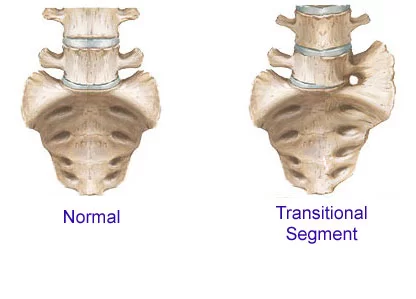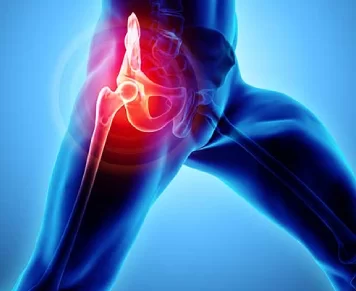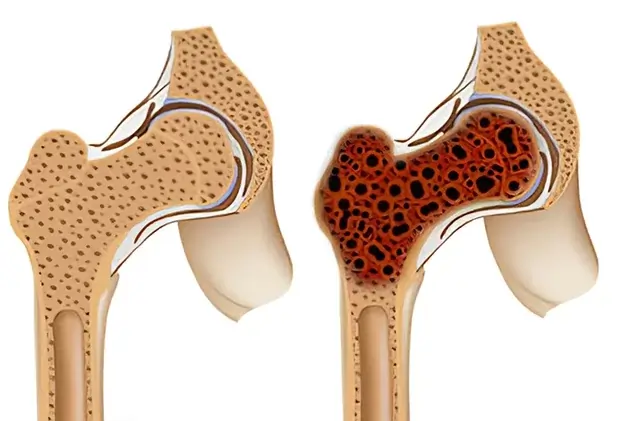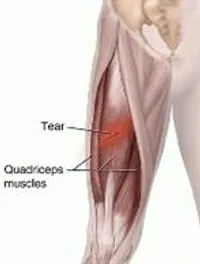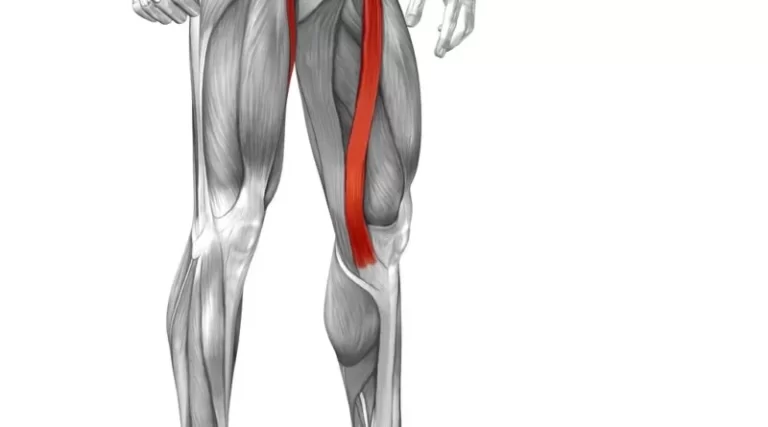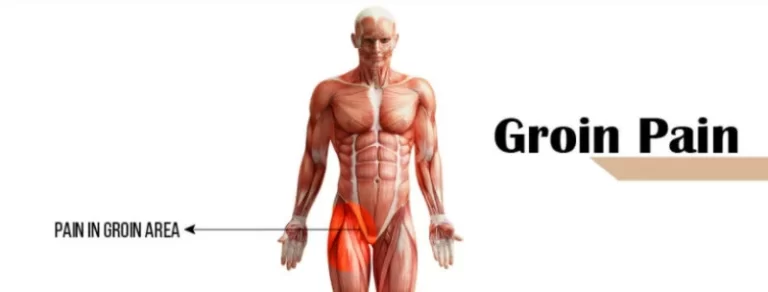Sacralization
What is a Sacralization?
A typical abnormality of the spine is called sacralization, which occurs when the fifth vertebra joins the sacrum bone at the base of the spine. It is possible for the fifth lumbar vertebra, or L5, to fuse entirely, partly, or on both sides of the sacrum. One congenital abnormality that affects embryos is sacralization.
The lumbar area of the spinal column bears the weight of the body and mostly permits back mobility. The five lumbar vertebrae, which are numbered L1 through L5 from above to below, are arranged to aid in their function. Because of its unique structure and properties, the fifth lumbar vertebra is able to perform its regular function and placement.
Sometimes during early life, some alterations might result in congenital abnormalities, which cause the vertebral bodies to be malformed. Different people may be affected in different ways by such congenital anomalies in the fusion or creation of particular components.
Anatomy of Lumbosacral Joint:
The lumbar vertebra has an uneven anatomical structure, consisting of a broad body, robust pedicle, thick lamina, thin transverse processes, and a short, thick square spinous process. Because of this sturdy construction, lumbar vertebrae are renowned for their distinctive biomechanics, which support and transfer the weight of the upper body and allow mobility in the lower back.
The strongest intervertebral disc in humans is located anatomically between the fifth lumbar and the first sacral vertebra. Its purposes are:
- In order to lessen the influence of depreciation on the spine when walking;
- In order to preserve the field in the intervertebral segment L5-S1, which is crucial for the passage of essential spinal canal nerve trunks through the gluteal area and lower leg, at a desired value.
- To avoid cauda equina nerves, which are a build-up of nerve fibers in the lower back.
Damage to the unique characteristics of the L5-S1 segment, such as sacralization, increases the strain on the upper lumbar segments (L1-L4). Until then, when a person begins daily heavy lifting often bending and Unfolding, this function is typically handled by the spinal column (for example, as a result of professional work).
When this happens, the intervertebral discs L1–L4 eventually become unable to support the prescribed load and experience compression syndrome-related back pain.
What are the Causes of Sacralization?
The main causes of sacralization include congenital, or existing from birth, and hereditary. Following are a few potential reasons for sacralization:
- genetic factors: Sacralization can happen from abnormal vertebral growth in the lower back caused by a hereditary predisposition.
- defects in pregnancy development: Sacralization may result from anomalies in the lower back vertebrae’s formation.
- Trauma: An improper fusion of the vertebrae can result in sacralization after a lower back trauma, such as a fracture or dislocation of the vertebrae.
- Degenerative changes: Abnormal fusion of the vertebrae and sacralization can result from degenerative changes in the spine, such as osteoarthritis.
- Tumors or infections: Sacralization may occasionally result from tumors or infections affecting the lower back area.
- Inflammatory conditions: Sacralization can result from illnesses like ankylosing spondylitis that inflames the spine.
- Around the eighth week of embryonic development, the vertebrae start to ossify.
- It is believed that sacralization of L5 concentrates stress on L4-L5, which might exacerbate degenerative spondylolisthesis development and encourage degenerative alterations.
Signs & Symptoms
Sacralization is a congenital disorder for which many individuals may never show any symptoms. Sacralization, however, might occasionally result in the following symptoms:
- Low back pain: Sacralization, particularly around the affected vertebrae, might result in persistent or sporadic lower back pain.
- Stiffness: The lower back may become stiff due to the fusion of vertebrae during sacralization, making it challenging to twist or bend.
- Reduced range of motion: People who have sacralization may have a limited range of motion in their lower back because of stiffness and pain.
- Numbness or tingling: Sacralization may occasionally result in nerve compression, which can cause the legs or feet to become numb or tingly.
- Weakness: Muscle weakness in the legs or feet can also result from sacralization-induced nerve compression.
- Sciatica: Pain, numbness, and tingling in the lower back and legs are symptoms of compression of the sciatic nerve.
- Buttock pain along with lower back pain
- Limited ipsilateral (body’s same side) flexion
- decreased mobility of tight muscles.
- Reduced flexibility and coordination
- Patterns of radicular or sciatic pain
- At the fusion site, arthritis
- disc degeneration, scoliosis, and bursitis
- leg pain that radiates
Type of Sacralization:
- Unilateral sacralization
- Bilateral sacralization
Diagnosis :
A lumbar spine X-ray is also necessary for the diagnosis of sacralization. In order to observe the lumbar area in various postures, the doctor may do flexion-extension X-rays on you. MRI imaging can be used to confirm a diagnosis.
Sacralization can take on several forms, which are categorized based on the fusion shown on an X-ray as partial or complete, and if it is unilateral (affecting just one side) or bilateral (affecting both sides). The Castellvi categorization that is most often used is:
- Type 1: a fusion on one (1a) or both (1b) sides that is at least 19 mm wide.
- Type 2: partial fusion with the creation of a pseudo joint on one or both sides (2a, 2b).
- Type 3: complete fusion of one side (3a) or both (3b) of the L5 to the sacrum
- Type 4:A mix of Types 2 and 3 is Type 4.
Examination :
Take a straight stance. Maintain your heels together and your toes split apart. If you are unable to do so, ask someone in the area to measure the distance with a tape measure (beginning at the end of the third finger) between you and the floor. Backward bending may cause pain.
A medical practitioner performing a physical examination may thoroughly assess the lower back, searching for indications of stiffness, restricted range of motion, or nerve compression.
- X-ray: The degree of vertebral fusion and the presence of sacralization may both be seen on lower back X-rays.
- CT scan: A CT scan offers a more in-depth representation of the bones and can reveal the extent of sacralization, or the fusion, between the vertebrae.
- MRI: An MRI scan can reveal the extent of sacralization-related nerve compression or injury.
- Increased activity in the fused vertebrae may be a sign of sacralization, according to a bone scan.
- The test known as electromyography (EMG) measures the electrical activity of the muscles and nerves. It can be applied to identify sacralization-induced nerve compression or injury.
Treatment Of Sacralization:
Medical treatment:
- muscle relaxants and anti-inflammatory medications for edema, inflammation, and back pain.
- One option is to explore steroid therapy and injections.
- If necessary, employ radicular, muscular, or manual treatment techniques.
- When a situation has to be corrected, surgery could be an option.
Physical Therapy treatment:
To ease pain Electrotherapy techniques, for example, are useful. IFT, Hot-Cold Pack, TENS, US
- Cryotherapy: In cases of swelling or inflammation, cryotherapy, also known as ice therapy, can be applied.
- Thermotherapy: To improve circulation to the affected region, heat therapy might be used.
- Transcutaneous electrical nerve stimulation (TENS): TENS stimulates the nearby nerves with low-voltage electrical currents. This may lessen the pain and tenseness in the muscles caused by sacralization.
- High-frequency sound waves are used in ultrasound treatment to permeate the skin and increase blood flow to the injured region. This may aid in lowering inflammation and accelerating recovery.
- Interferential current treatment (IFC): IFC can help lessen pain and inflammation by creating a low-frequency electrical current by combining two high-frequency electrical currents.
- Spinal cord stimulation (SCS): SCS communicates with the spinal cord by means of a tiny electrical device that is implanted beneath the skin. This may lessen sacralization-related pain by blocking pain signals from the affected location.
- Manual therapy: Methods including joint mobilization, myofascial release, and soft tissue mobilization can help lessen the lower back pain and increase the range of motion.
- Therapeutic activities: Targeted exercises can assist in increasing flexibility, strengthen the lower back muscles, and lessen pain. A physical therapist can create a personalized workout regimen based on each patient’s unique requirements.
- Lifestyle Modification: A physical therapist may offer guidance on how to change one’s way of living to manage pain, avoid behaviors that exacerbate symptoms, and stop injuries from happening again.
Sacralization exercises :
- Pelvic Tilt Exercises :
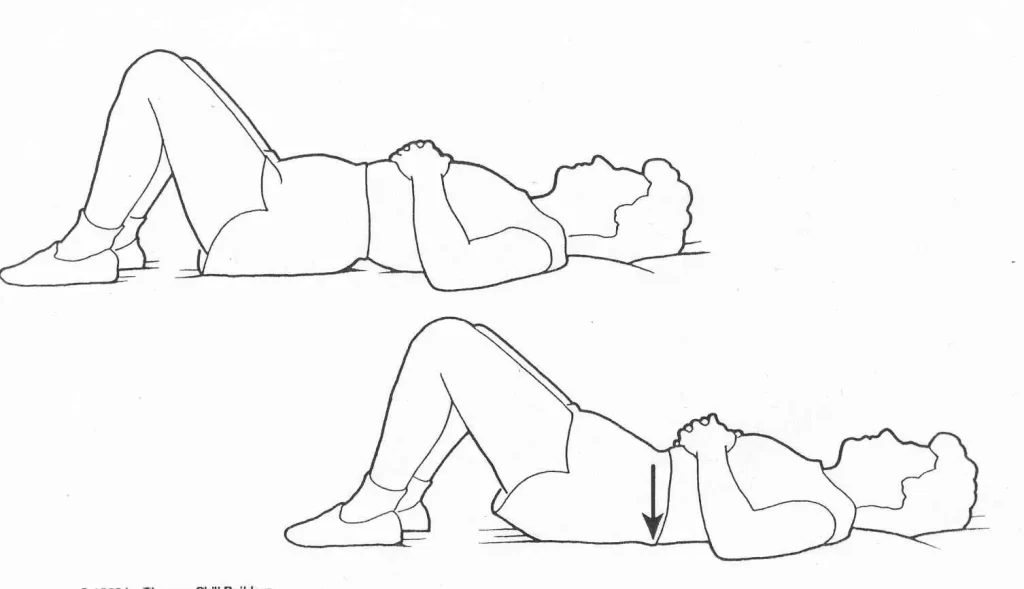
Your L5 vertebra can benefit from the pelvic tilt exercise. By fortifying your abdominal muscles and preventing your lower lumbar paraspinal muscles from contracting, it lessens lower back pain. Lying on your back, place your feet flat on the floor and bend your knees. Place your hands on either side of your pelvic bones. Tilt your pelvis towards the sky by forcing your lower back into the ground while tensing your abdominal muscles. Let go and carry on.
- Hamstring Stretching exercise :

Your lumbar spine may be stabilized by performing the hamstring stretch. Maintain a neutral spine posture while you lie on your back with your legs bent. Lift your heel toward the ceiling to straighten and elevate your left leg in the air. Using both hands, hold your leg behind your upper thigh and slowly bring it closer to your torso. For as long as thirty seconds, hold the stretch; then, release it and switch to the other side.
- Back Flexion Exercise :
Exercises that strengthen the back flexors contribute to better back function overall. In an attempt to address low back pain without surgery, these exercises aim to strengthen the abdominal and gluteal muscles, prevent lumbar extension, and improve lumbar flexion. The hamstring, tensor fasciae latae, erector spinae, and iliofemoral ligament are also stretched.
- Back Extension Exercise :
Exercises for back extension can help with pain reduction, symptom localization, and full pain recovery. Exercises for back extension also help with quick healing and strengthen the back muscle.
The variations on these workouts are endless. Select the appropriate approach that best suits your degree of comfort, strength, and ability.
FAQs
What makes sacralization complicated?
One congenital abnormality that affects embryos is sacralization. Sacralization is frequently symptomless. It can occasionally be linked to issues with mobility and posture, as well as lower back pain. It is sometimes referred to as LSTV or lumbosacral transitional vertebrae.
What does L5 S1 sacralization mean?
The lowest lumbar vertebra (L5) becomes improperly connected to the sacrum when it undergoes sacralization. When the sacrum’s top (S1) can be removed from it, the lumbar spine seems to contain six vertebrae rather than five. This is known as lumbarization.
Can sacralization be cured?
To treat a particular disc or other anomalies caused by the sacralization, surgery could be advised. People occasionally are unaware of or unaware of their problems. Sacralization is a condition that may be managed, but it cannot be cured.
What does L5 sacralization during labor mean?
Sacralization can occur when the cartilage between the first and fifth sacral vertebrae calcifies. Because of the fusion of the lumbosacral joint, sacralization in females makes the pelvis less flexible, which makes labor more difficult. It might be the cause of a backache.
How often does sacralization occur?
The general population reports a frequency of 3.4-7.2% for lumbarization and 1.7-14% for sacralization. Males are observed to have a higher incidence of LSTV than females.
In psychology, what does sacralization mean?
The phrase “sacralization of the self” describes a new position that people have attained in the New Age when people are seen as bearers of the divine spark, sources of authority and truth, and creators of their own destinies.
Is sacralization a deformity of birth?
The transverse process of the last lumbar vertebra (L5) fuses to the sacrum on one or both sides, or to the ilium, or to both, in a congenital condition known as sacralization of the fifth lumbar vertebra.
Does the Sacrament of birth have an impact?
The normal dynamics of human parturition can be further complicated by a pelvis with incomplete sacralization or partial lumbarization, which often presents two distinct degrees of auricular surfaces on either side in addition to increased SH and IADs.
Is it typical to sacralize?
A congenital abnormality of the lumbosacral spine known as sacralization occurs when the first sacral segment and L5 fuse together. This modification might lead to the inaccurate identification of a spinal segment. This aberration has been reported in a number of studies including people with back pain.
What does sacralization entail?
Sanctification, the act or process of gaining holiness in a religious environment, is one meaning of sacralization. See political religion for more on the social and political phenomena of sacralization. The fifth lumbar vertebra’s sacralization is a congenital spinal abnormality.
What is sacralization and how does it happen?
The practice of pooling specific asset categories to enable their repackaging into interest-bearing securities is known as securitization. The buyers of the securities receive a pass-through of principal and interest payments from the assets.
Can sacralization be cured?
Research demonstrates that non-invasive methods of sacralization and lumbarization are quite successful in treating the symptoms of this illness.
Why does sacralization occur?
It’s unknown what led to sacralization. It happens during the eighth week of fetal development when the vertebrae start to ossify. A genetic tendency might be at play here.
How often does sacralization occur?
Whereas lumbarization was only about 2% of cases, sacralization accounted for 11% of cases.
Can sacralization be cured?
Therapy for SacralizationSacralization seldom results in any symptoms or functional issues. It could, however, aggravate lower back pain or other spinal problems in certain people. Several therapy approaches may be taken into consideration if sacralization is causing substantial pain or limiting everyday activities. The majority of therapies are non-surgical, such as changing one’s lifestyle to avoid or reduce activities that aggravate pain while taking painkillers, receiving physical therapy, and exercising. Rarely is surgery necessary.
Does the sacralization process hurt?
The L5 and S1 vertebrae only partly fuse when sacralization is incomplete, whereas the L5 vertebra completely fuses with the sacrum bone. The fusion may put an excessive amount of strain on the surrounding joints, which can lead to arthritis and low back pain with early degenerative changes.
Is L5 sacralization a severe issue?
The L5 and S1 vertebrae only partly fuse when sacralization is incomplete, whereas the L5 vertebra completely fuses with the sacrum bone. The fusion may put an excessive amount of strain on the surrounding joints, which can lead to arthritis and low back pain with early degenerative changes. Nevertheless, it varies from person to person and may not show any symptoms or maybe rather dangerous.
References
- Hecht, M. (2018, March 21). Sacralization. Healthline. https://www.healthline.com/health/sacralization
- What Is Sacralization?, Symptoms, Causes, Diagnosis & Physiotherapy Treatment Of Sacralization. (n.d.). Cbphysiotherapy. https://cbphysiotherapy.in/condition/sacralization
- Dhameliya, N., & Dhameliya, N. (2023, June 20). Sacralization : Cause, Symptoms, Diagnosis, Treatment, Exercise. Samarpan Physiotherapy Clinic. https://samarpanphysioclinic.com/sacralization/

